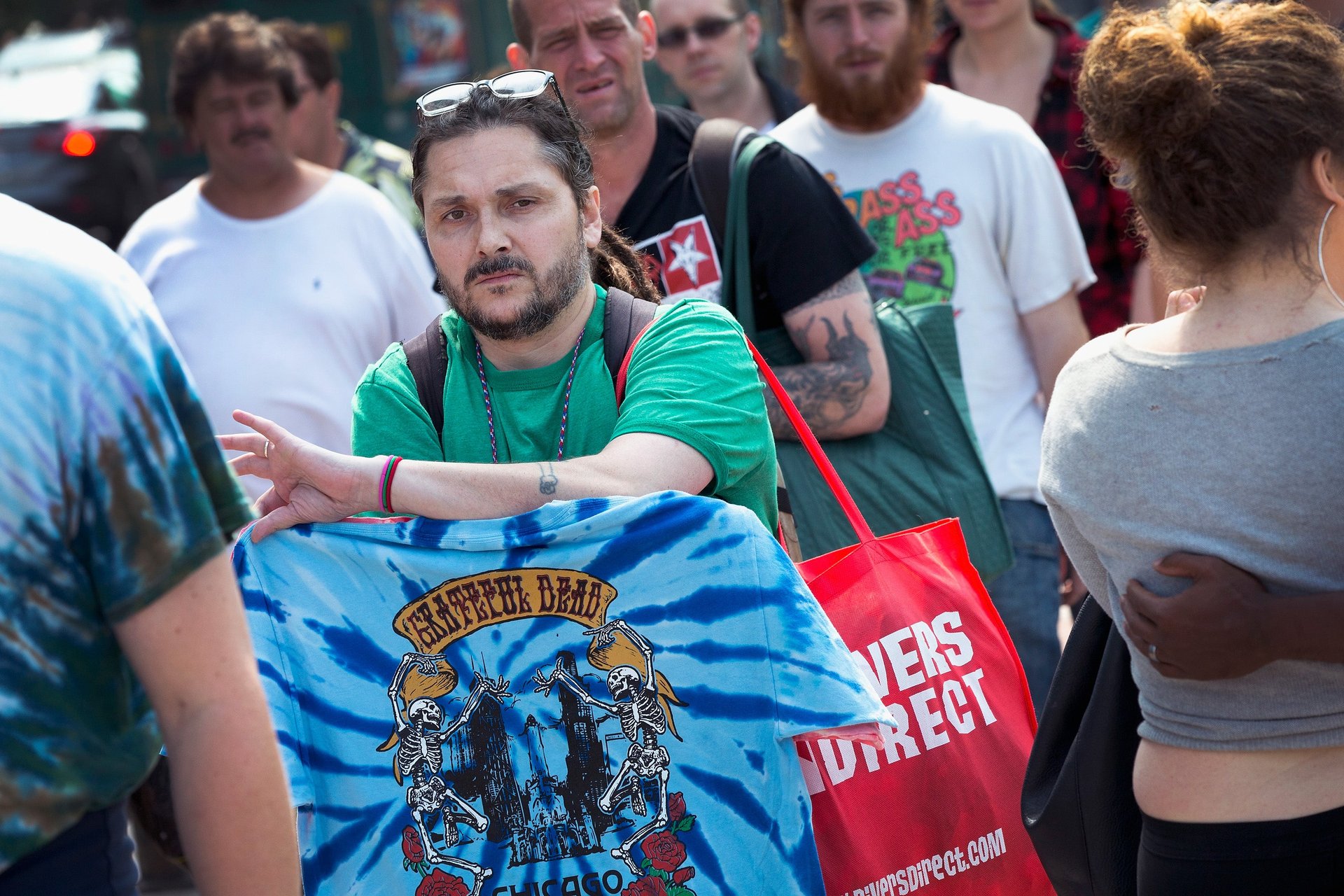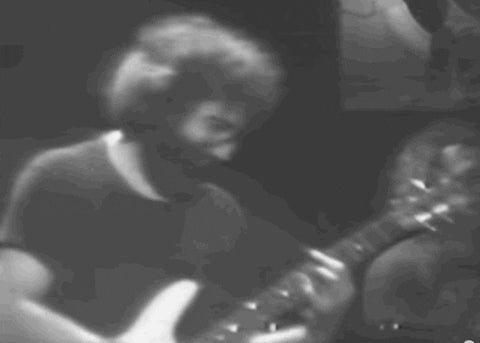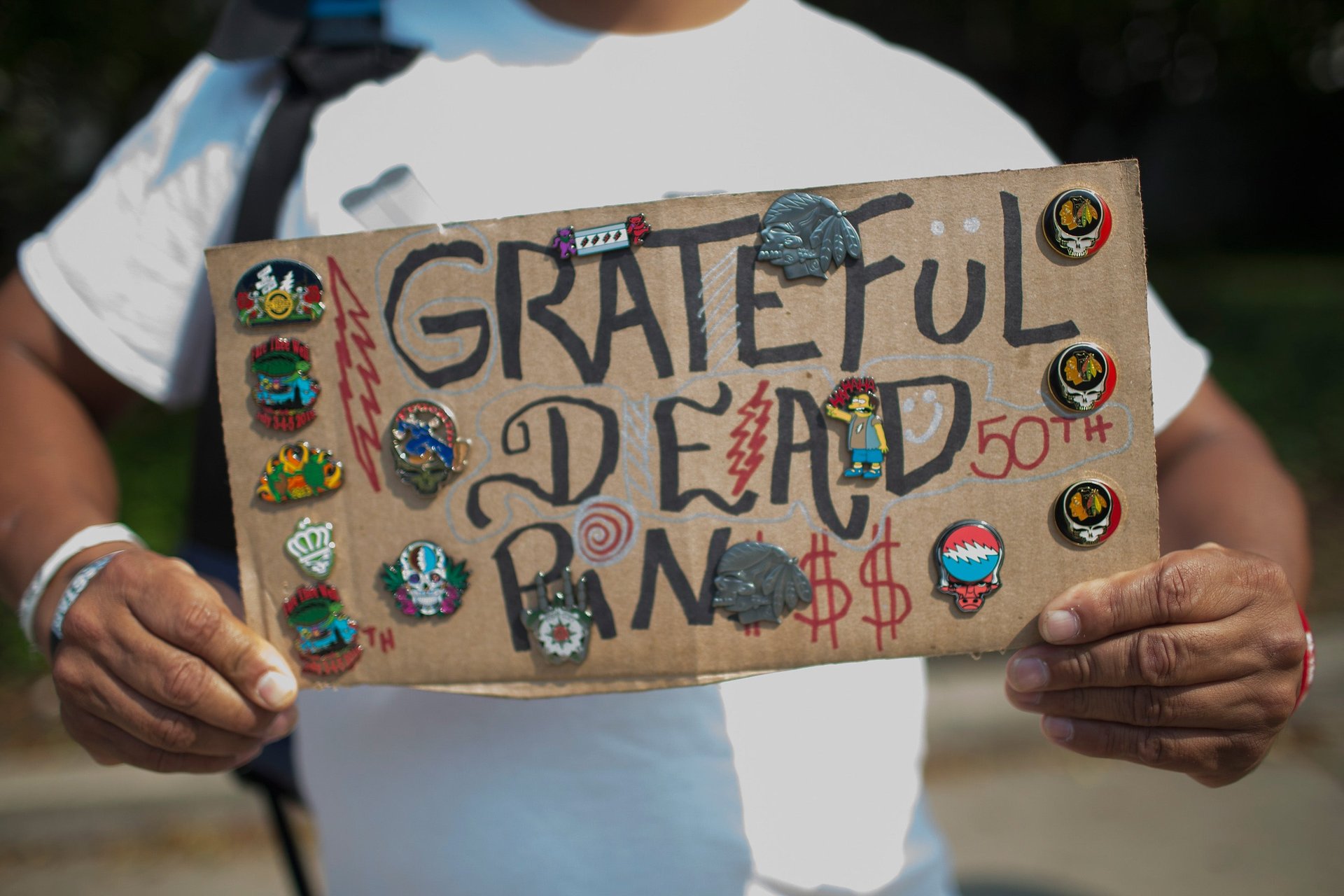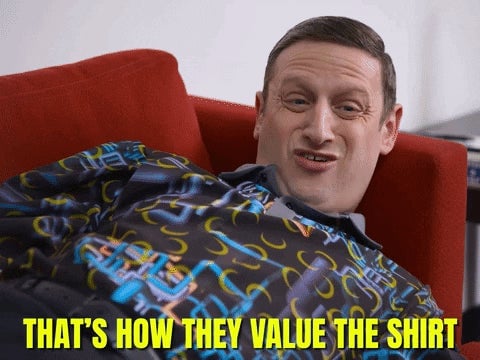Grateful Dead shirts: They won’t fade
What other economies can learn from the decades-long success of band tees

Love this real will not fade away
Suggested Reading
Despite playing their last concert in 1995, The Grateful Dead continues to enjoy unbelievable staying power. This past summer, Dead & Co, a Grateful Dead offshoot that includes original and long-time members Bob Weir, Bill Kreutzmann, and Mickey Hart, embarked on their final tour, which grossed a staggering $115 million.
Related Content
But the big bucks around the Dead aren’t just for concert tickets. Merch, especially t-shirts, have long contributed to the Dead’s enduring popularity. Two distinct Grateful Dead economies exist, and both appear to be thriving: There are brand collabs, which include officially licensed items like Igloo coolers, Nike kicks, sunglasses, and kitchen aprons; and vintage “lot” merch—bootleg apparel (mostly t-shirts) made for fans by fans and sold in venue parking lots known as Shakedown Street, a moniker based on the 1978 Dead album. The Shakedown scene echoed the idea of spreading the gospel of the Dead to as many people as possible—the same spirit that made trading bootleg concert tapes so prevalent. These days, vintage lot shirts sell like lazy lightning for anywhere from $50 to $500 on sites like Instagram, eBay, and online marketplace Grailed.
What can other economies learn from the decades-long success of Dead t-shirts? Let’s find out.
Estimated profit
2,314: Concerts performed by The Grateful Dead between 1965 and 1995
$4.4 billion: Value of the music merch licensing industry
$70 million: Estimated revenue from Dead merch in 2000, according to Grateful Dead biographer and publicist, Dennis McNally
$19,315.80: The most money spent on a Grateful Dead shirt by Bo Bushnell at a Sotheby’s auction in 2021
$115 million: Grossed by Dead & Co.’s final tour in 2023
The band keeps playing on
The economy of being Dead
What makes The Grateful Dead such an economic force is that even when it appears their stint may actually be all over now, the band and overarching movement proves it’s built to last. When acoustic pop heartthrob John Mayer joined Dead & Co. in 2015, a new audience got on the bus, and they brought with them a demand for lot merch, new and old, with vintage apparel commanding the highest price point.
One such seller—Jesse Lockwood, whose Instagram account @primarilydead has 52,000 followers—posts vintage shirts daily, and when he does, they sell out almost instantly at around $150 to $300 a pop. He estimates that he’s sold around 5,000 shirts since starting the account just two years ago. Lockwood says his customers are 70% men and 30% women, mostly between the ages of 25 to 44. “I think a lot of my account growth is owed to the nostalgia people feel when they see shirts they owned 30 years ago,” Lockwood told Quartz. “There has been a large uptick in purchases from young women in the last year. This music is generational, and I can literally see the next generation on the scene, attending shows, buying merch, etc.”
Dead shirts are a small but noteworthy part of the hundred-billion-dollar vintage market that has been steadily growing in the US and abroad in response to and against the rise of fast fashion, given a boost by a wave of nostalgia that seemed to take hold around the covid pandemic, as people shuttering in place sought comfort in the familiar and had expendable income thanks to their stimulus checks. According to Lockwood, there are parallels in the hardcore community, where t-shirts fetch similarly staggering prices. And vintage apparel from 90s grunge acts like Nirvana are also enjoying a surge in demand, with original shirts selling for thousands of dollars.
The fervor for vintage band t-shirts points to the idea that niche cultures can be competitive, economically, with bigger, more widely popular acts when it comes to merch. Whether they’re Deadheads or Swifties, consumers are finding acceptance, validation, and community through buying merch and the signaling that comes through wearing or even just owning these items
Pop quiz

Which of these is not a Grateful Dead lyric?
A. “The gypsy wore silk and jingling bells / she rode a terrapin through the mouth of hell”
B. “Skippin’ through the lily fields I came across an empty space / It trembled and exploded, left a bus stop in its place”
C. “Mirror shatters in formless reflections of matter / Glass hand dissolving in ice petal flowers revolving”
D. “Wildflower seed on the sand and wind / May the four winds blow you home again”
Read to the end to gauge how well you can spot counterfeit words.
What a long, strange trip it’s been
1965: The Grateful Dead play their first show in San Jose on Dec. 4 at one of The Merry Pranksters Acid Tests (LSD-fueled parties spearheaded by counterculture icon, Ken Kesey).
1994: The Grateful Dead are inducted into the Rock & Roll Hall of Fame.
1995: Grateful Dead frontman and founder, Jerry Garcia, dies at the age of 53.
2015: John Mayer starts touring with Dead & Co, the Grateful Dead offshoot that includes original and long-time members Bob Weir, Bill Kreutzmann, and Mickey Hart.
2020: Nike releases Grateful Dead x Nike SB Dunks in three colorways for $110 each.
2023: Dead & Co. embark on their final tour.
Fun fact!
Despite having only one Billboard Top 10 album (1987’s In the Dark), The Grateful Dead has the record for the most Billboard 200 charting albums, at an impressive 119.
Watch this!

Nothing shaking on Shakedown Street
Jerry Garcia, here talking about the band’s philosophy toward tapers and trading. Thanks to sites like Relisten and archive.org, shows are now available with the click of a button, driving down the demand for tapes (plus, who owns a cassette player anymore?).
So, what has filled in the gap? The merch, which is now traded and sold with the same zeal that once characterized the tape trading economy.
Take me down this 🐰 hole!
Some of the most coveted Dead apparel on the market is from a very specific story in the band’s history—their sponsoring of the Lithuanian basketball team’s journey to the 1992 Olympics. After the band agreed to sponsor the team, friends of the band who owned an apparel company created the team’s uniform, which featured the Dead’s signature tie-dye. Now shirts and jerseys associated with the Lithuanian basketball team fetch a pretty penny, thanks in part to a boost from actor and “king of streetwear” Jonah Hill, in 2018.
Rather than a desire to make a profit on merch, the Grateful Dead/Lithuania collab was the result of an altruistic aspiration to support a fellow underdog, but the success spoke for itself, and these days, music-fashion collabs are a big business, with luxury brands like Balenciaga and Supreme and footwear brands like Adidas and Crocs partnering with performers from Rammstein to Bad Bunny, just to name a few.
Poll

What’s the most you would pay for merch from your favorite musical act?
- $50 — I’m a fan, not a fanatic!
- Between $50 and $200—I’m reasonably obsessed, and I’ve got a budget!
- Money is no object. The world must know that I am the one true fan.
What’s the price you could swallow? Let us know.
💬 Let’s talk
In last weeks poll on halftime shows, 34% of you said you don’t know what football is (lol), but 31% said you watch the Super Bowl for the game, 25% do for the commercials, and only 10% care about the halftime show!
Today’s email was written by Stephanie Ganz (worked so many Dead lyrics into this and hopes you noticed) and edited and produced by Morgan Haefner (is more of a Huey Lewis and the News head).
The correct answer to the pop quiz is A “The gypsy wore silk and jingling bells / she rode a terrapin through the mouth of hell.” The author isn’t Robert Hunter (Garcia’s songwriting partner and official member of The Dead), but when using a sort of Grateful Dead Imagery Bingo, which includes but is not limited to mystical women, spooky stuff, and turtles, anyone can write a Grateful Dead song!